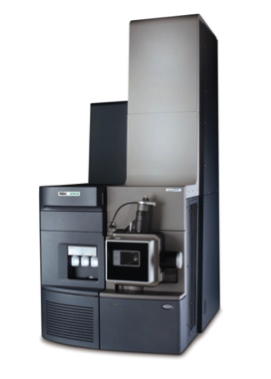October 3, 2018 --

If you have been following our mass spec series you have certainly recognized the number of different ways mass spec can be used to separate ions of different masses. Time of Flight Mass Spectrometry (TOF-MS) was developed in the 1940’s and began to gain popularity in the 1990’s. Since then, the technology has been enhanced and updated to be the device we have today. TOF-MS consists of an analyzer that measures ion mass by logging the ion flight time. TOF mass spectrometers function in a pulsed mode, rather than a continuous mode. This way, all of the ions with different masses are accelerated to the same kinetic energy and pulse into the field-region of the flight tube. When leaving the acceleration region, the ions will move down the field, with velocities inversely proportional to the square root of their masses. Ions with different m/z ratios arrive at the detector at different times. Under this principle, lighter atoms with higher velocity arrive before the heavier atoms.
You may be wondering, how does one convert flight time into mass? In order to do so, a calibration with a solution of known compounds is sent through the TOF-MS. The computer that receives the data will use these known values in its calculations along with a comparison of the calibration masses and their exact values to determine any minor deviations. The calibration step is critical for obtaining accurate mass measurements.
OF LC/MS includes TOF mass spectrometers designed to be used with HPLC or other liquid separation techniques. These instruments are configured with electrospray ionization (ESI) sources, as well as pressure chemical ionization (APCI), atmospheric pressure photoionization (APPI), or some combination thereof. Some quadrupole TOF (Q-TOF) models can even be configured with matrix-assisted laser desorption ionization (MALDI) sources. We discussed TOF instruments that are built as dedicated MALDI systems in a previous article.
TOF LC/MS includes LC-TOF, Q-TOF and ion trap TOF (IT-TOF) instruments. LC-TOF is the most basic, coupling a TOF analyzer with an HPLC. Q-TOF is a hybrid configuration using a quadrupole mass analyzer in tandem with a TOF mass analyzer and can perform MS/MS experiments. A more recent variant of the Q-TOF uses an ion trap front end in tandem with a TOF mass analyzer and is referred to as an IT-TOF. IT-TOF models are relatively rare and fairly similar to the conventional Q-TOF instrument.
Like any technology, the TOF-MS system has a number of pros and cons. For one, the TOF-MS system is capable of acquisition rates up to 500 spectra/s. This makes it a great option as an MS detector when coupled with gas chromatography applications. TOF can be advantageous in broad-spectrum applications due to increased mass accuracy and high sensitivity. In many causes TOF-MS is recognized for its high-resolution results, however, TOF instruments can have limited resolution at high mass. This is because as the mass of ions at the detector increases, it can become more difficult for the detection system to differentiate. In any case, depending upon your application, TOF-MS can be an excellent choice to enhance your work!
What do you think?
How has Time of Flight MS benefitted your research? What do you think could make the technology even stronger? Start the discussion below in the forums!
Copyright © 2018 scienceboard.net






